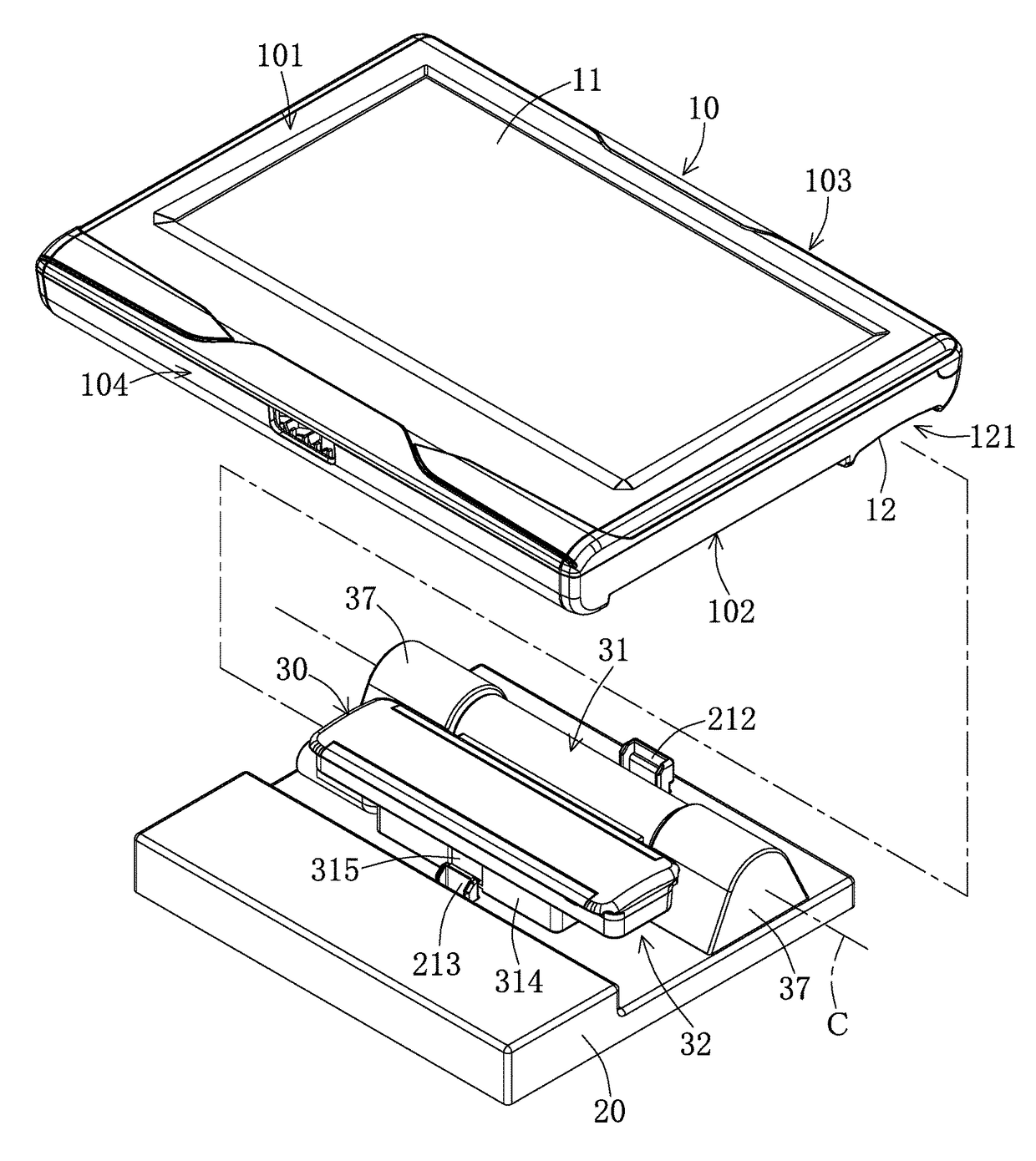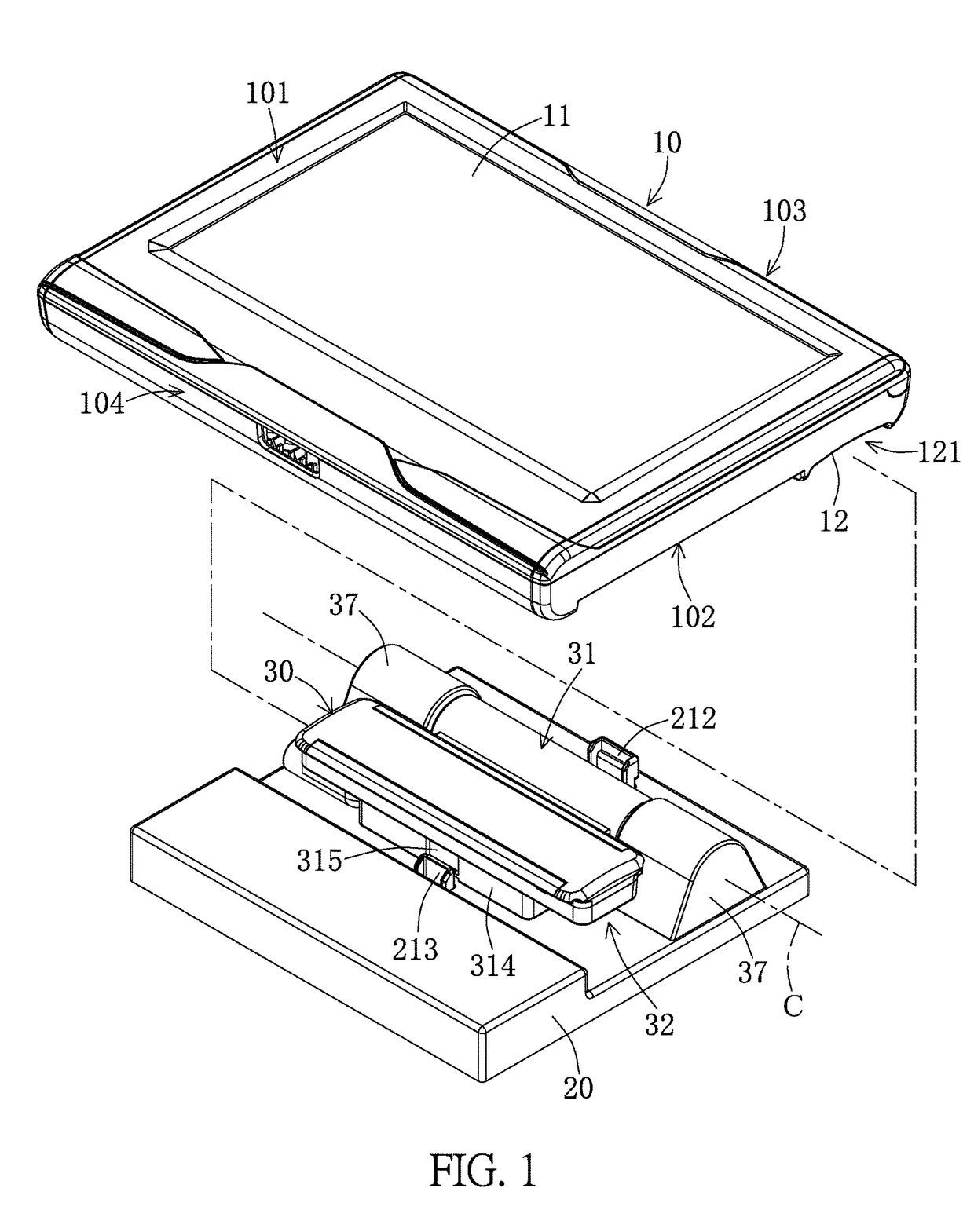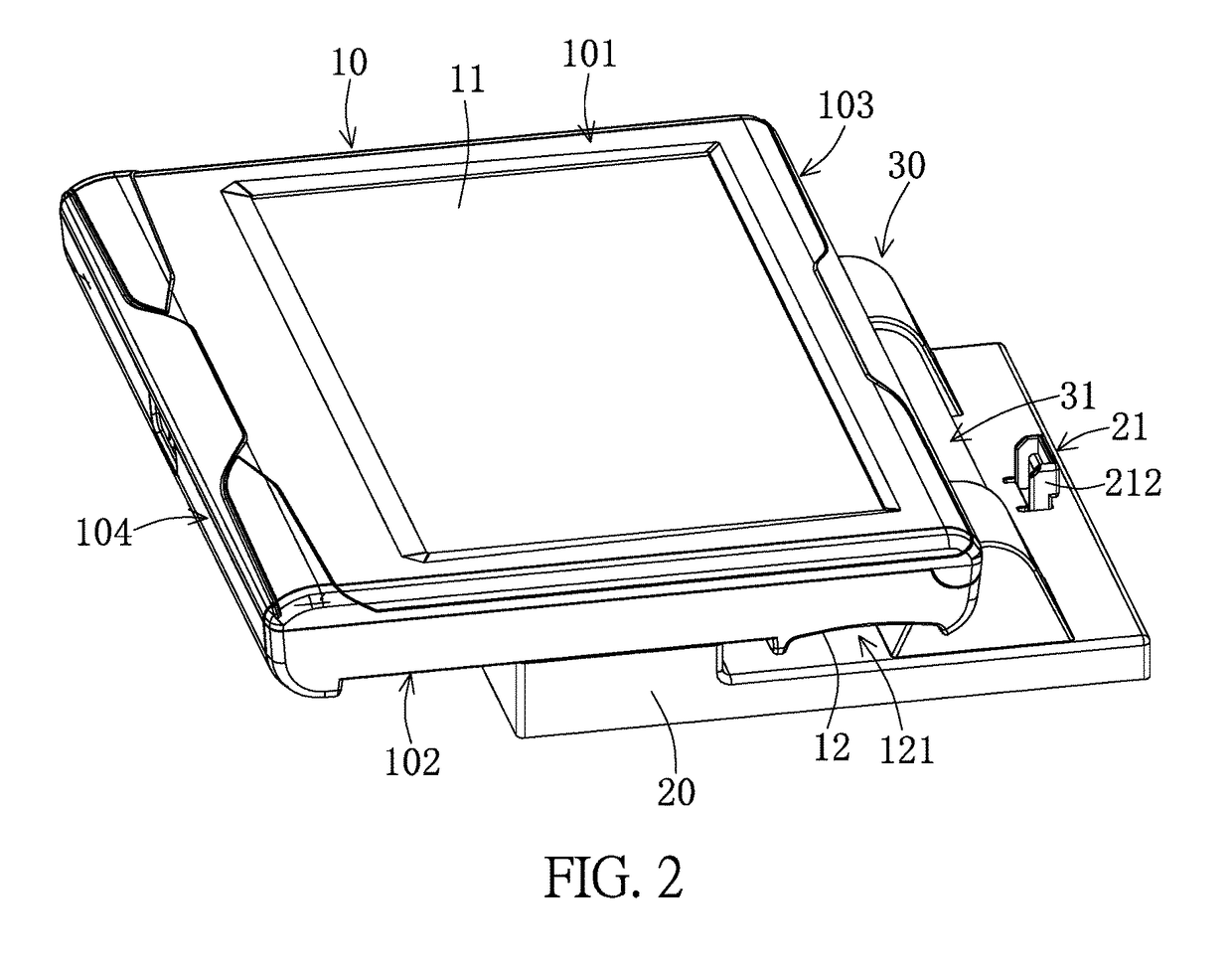Display device for vehicles
- Summary
- Abstract
- Description
- Claims
- Application Information
AI Technical Summary
Benefits of technology
Problems solved by technology
Method used
Image
Examples
Embodiment Construction
[0029]Reference will now be made in detail to the exemplary embodiments of the present disclosure, examples of which are illustrated in the accompanying drawings. Wherever possible, the same reference numbers are used in the drawings and the description to refer to the same or like parts.
[0030]Referring to FIG. 1 and FIG. 2, the display device of the present disclosure includes a display module 10, a base 20 and a connecting module 30 disposed on the base 20. The base 20 is disposed on the inside roof P of a vehicle (as shown in FIG. 10 to FIG. 12), the connecting module 30 is disposed on the base 20 and includes a hinge 31 and a connecting assembly 32 connected to the hinge 31. The display module 10 is detachably connected to the connecting assembly 32 and is rotatable by the hinge 31 when mounted on the base 20.
[0031]As shown in FIGS. 1, 2 and 6, the display module 10 has a front side 101 and a back side 102 opposite to the front side 101, and a connecting groove 12 is disposed at...
PUM
 Login to View More
Login to View More Abstract
Description
Claims
Application Information
 Login to View More
Login to View More - R&D
- Intellectual Property
- Life Sciences
- Materials
- Tech Scout
- Unparalleled Data Quality
- Higher Quality Content
- 60% Fewer Hallucinations
Browse by: Latest US Patents, China's latest patents, Technical Efficacy Thesaurus, Application Domain, Technology Topic, Popular Technical Reports.
© 2025 PatSnap. All rights reserved.Legal|Privacy policy|Modern Slavery Act Transparency Statement|Sitemap|About US| Contact US: help@patsnap.com



